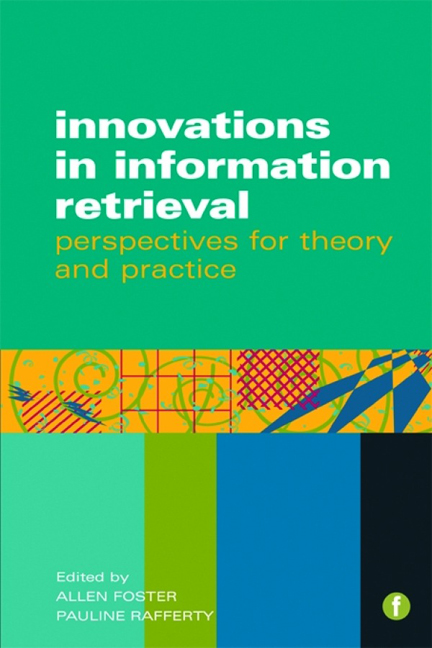Book contents
- Frontmatter
- Contents
- Figures and tables
- Contributors
- Foreword
- Introduction
- 1 Encountering on the road to Serendip? Browsing in new information environments
- 2 Classification revisited: a web of knowledge
- 3 Approaches to fiction retrieval research: from theory to practice?
- 4 Music information retrieval research
- 5 Folksonomies, social tagging and information retrieval
- 6 Digital information interaction as semantic navigation
- 7 Assessing web search engines: a webometric approach
- Index
1 - Encountering on the road to Serendip? Browsing in new information environments
Published online by Cambridge University Press: 08 June 2018
- Frontmatter
- Contents
- Figures and tables
- Contributors
- Foreword
- Introduction
- 1 Encountering on the road to Serendip? Browsing in new information environments
- 2 Classification revisited: a web of knowledge
- 3 Approaches to fiction retrieval research: from theory to practice?
- 4 Music information retrieval research
- 5 Folksonomies, social tagging and information retrieval
- 6 Digital information interaction as semantic navigation
- 7 Assessing web search engines: a webometric approach
- Index
Summary
Introduction
This chapter considers the continuing relevance of the ideas of browsing, serendipity, information encountering and literature discovery in the context of the information retrieval (IR) environment of 2010, though its scope extends to the ideas in the broader contexts of information seeking and informationrelated behaviour. It is based around a selective review of the literature since 1990 and reflection and speculation on the results. The central focus is on questions of how the concept of browsing, serendipity and related ideas have changed in the new IR environment of the web and whether, indeed, they are still meaningful concepts.
By the early 1990s, computerized retrieval was well established in practice and much investigated academically, but the internet was not widely used and the web was not developed. Browsing was a ubiquitous way of finding information, regarded as reasonably well understood. The literature on browsing, serendipity, creative use of information and associated topics up to that point has been thoroughly reviewed (Bawden, 1993a; Chang and Rice, 1993) and this older material will not be systematically covered in this chapter. More recent reviews and literature summaries are provided by Rice, McCreadie and Chang (2001), Foster and Ford (2003), Bates (2007), McBirnie (2008), Anderson (2010), Makri and Warwick (2010), Nutefall and Ryder (2010) and Case (2007), who analyses the concept of browsing and gives numerous examples of studies where its importance as a behaviour has been shown.
Browsing, as a concept, did not necessarily have a positive image among information specialists. I can recall being introduced, while studying for my master's degree, to the views of some senior practitioners who held that if users of a library were found to be browsing to any great extent, then this was a reflection on the library and its staff.
- Type
- Chapter
- Information
- Innovations in Information RetrievalPerspectives for theory and practice, pp. 1 - 22Publisher: FacetPrint publication year: 2011
- 5
- Cited by



